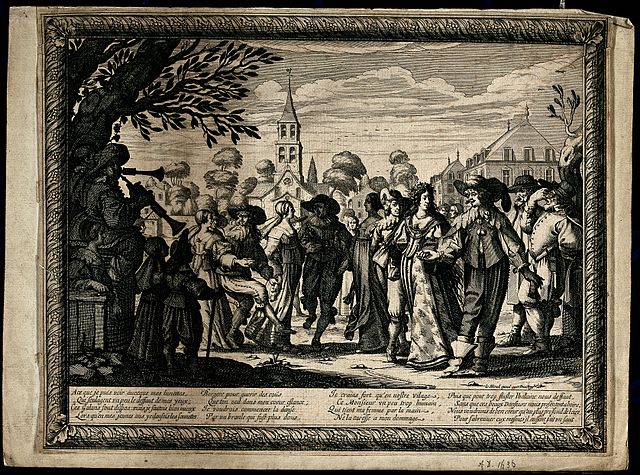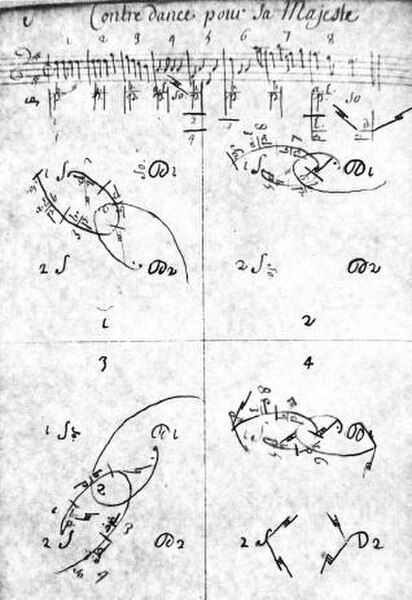A country dance is any of a very large number of social dances of a type that originated in the British Isles; it is the repeated execution of a predefined sequence of figures, carefully designed to fit a fixed length of music, performed by a group of people, usually in couples, in one or more sets. The figures involve interaction with your partner and/or with other dancers, usually with a progression so that you dance with everyone in your set. It is common in modern times to have a "caller" who teaches the dance and then calls the figures as you dance. Country dances are done in many different styles.
Comical 18th-century country dance; engraving by Hogarth
Village country dance; engraving by Abraham Bosse, 1633
Lorin's contradanse choreography, one of the earliest western dance notations
The "La Trénis" figure of the Contredanse, an illustration from Le Bon Genre, Paris, 1805
Social dances are dances that have social functions and context. Social dances are intended for participation rather than performance. They are often danced merely to socialise and for entertainment, though they may have ceremonial, competitive and erotic functions.
A social dancing or ballroom dancing group class taught at the Arthur Murray Dance Studio in The Woodlands, Texas.
Khigga is the most common social folk dance among Assyrian people.
Eighteenth-century social dance. Translated caption: A cheerful dance awakens love and feeds hope with lively joy, (Florence, 1790)







